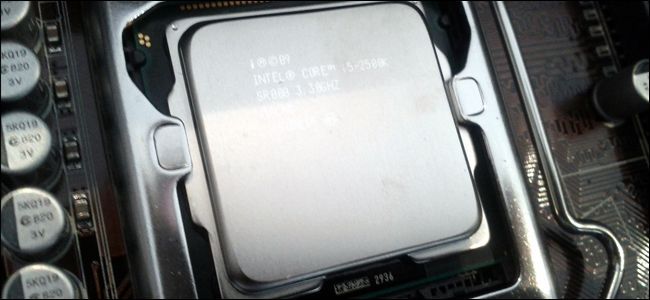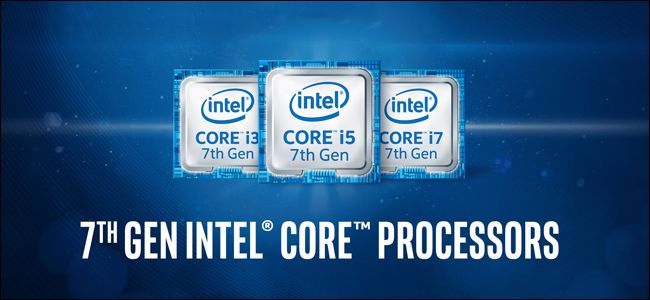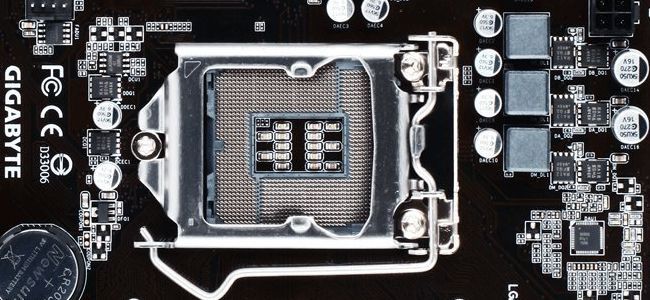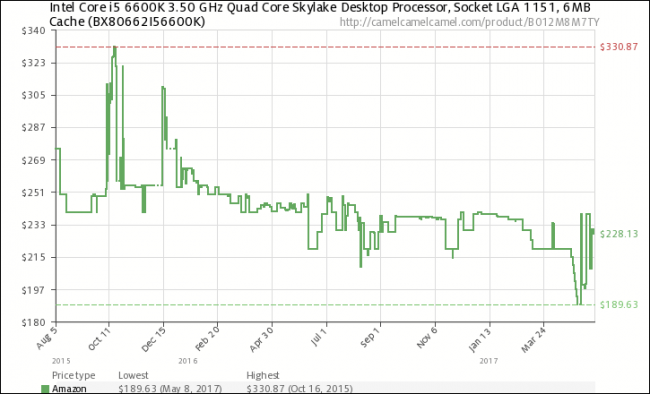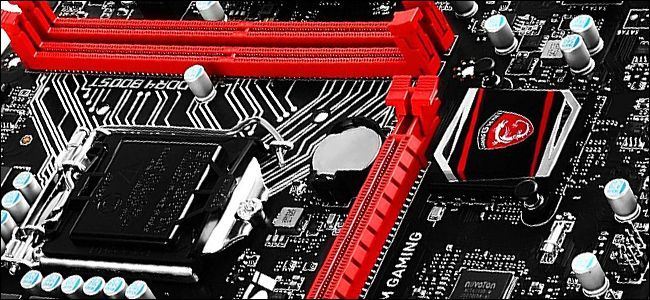Quick Links
When you're assembling a new computer (or upgrading an old one), the motherboard and CPU have a few extra considerations that you need to keep in mind. First, they're the most restrictive parts to pair: only a relative few processors will fit with your motherboard's specific socket type. And second, the motherboard selection itself is going to determine a lot of the core capability and direction of your PC build.
You definitely need both of these components to build anything that broadly counts as a PC. But is now a good time in terms of economy and tech to invest in some new Intel-branded parts?
Short answer: No. Intel's current crop of "Kaby Lake" processors has met with disappointing reactions due to modest bumps. The next generation is going to be only slightly optimized, and it hasn't been confirmed that the much faster "Cannonlake" processors in late 2017 will use the same LGA 1151 motherboard socket. If you have the option, you should wait on a purchase.
14nm Processors Are On Their Way Out
CPU manufacturing generations can generally be split up into years (Intel releases a new model for each price/performance point almost every year), but you can also group them by semiconductor size. The second one is crucial, and at the current level of fabrication it's measured in nanometers---the smaller the better, since smaller semiconductors can be crammed into a CPU more densely. It's a lot more complicated than that, of course, but "fewer nm = faster processor" is a decent rule of thumb.
Right now, Intel is selling the third and fourth iteration of its 14nm CPU designs: "Broadwell" began in 2015 (model numbers 5xxx), followed by "Skylake" (6xxx) and now "Kaby Lake" (7xxx). All of the consumer versions of these chips use the LGA 1151 CPU socket, so named because (wait for it) it has 1,151 contact pins connecting the processor to the motherboard.
The last 14nm processors are now coming to market, the "Coffee Lake" design, very likely the last to use the LGA 1151 socket. Coffee Lake is expected to come with a relatively modest fifteen percent bump in performance levels. Kaby Lake was already pretty shallow in terms of performance gains at each level of Intel's processor hierarchy, and it's likely that the company's dominant position over AMD is allowing it a bit of wiggle room in the market. With Ryzen CPUs making notable improvements, at generally better prices to boot, all eyes are on the 10-nanometer chip designs expected to be available starting at the end of 2017.
We're also seeing the new X-series of processors, designed specifically for enthusiast builds and including the top-of-the-line i9 series. But these are a different consideration for most users, since they're hundreds of dollars more expensive than comparable models and they come with another custom socket design, the LGA2066. Their architecture is a little confusing, since the label includes both Kaby Lake and Skylake designs in modified configurations. But anyone in the market for these designs will simply be getting the most expensive chips available... and they don't need to read a guide like this one to make their decision.
...and 10nm CPUs Might Come With A New Socket
Cannonlake is adding a bit of ambiguity to Intel's immediate future. At this point it's been proposed, but not proven, that the big shift for CPUs will use the LGA 1151 socket---the same one in use on most Intel-compatible motherboards since 2015. With new chipsets on LGA 1151 motherboards as recent as the first quarter of 2017, it seems at least possible that Intel would want to preserve compatibility, making a new motherboard (if not CPU) purchase at least somewhat viable at the moment.
But Intel has yet to formally confirm that Cannonlake-class CPUs will be available in LGA 1151 configurations, as they've done with Coffee Lake. Since the older LGA 1150 socket and several before it lasted for two processor generations---about two years---we're due for a new one. A dramatically smaller fabrication process with the expected performance gains therein would be an apposite time to introduce a new socket with more capable chipsets. There's also a new RAM standard, DDR5, expected to hit the wider market in early 2018 (LGA 1151 motherboards support DDR3/4).
It's possible (though less likely) that Intel will release a few Cannonlake CPUs that work with LGA 1151 before transitioning to a new socket. Either way, the uncertainty of Intel's socket intentions should be enough to make spec-hungry buyers wait to see if the current standard holds or if the market will transition to new hardware at the usual time. Even if Cannonlake keeps to the LGA 1151 format, it's likely to be the last generation of Intel processors that does.
Intel's Market Position Means Deals Are Thin on the Ground
Even if Intel's current lineup of chips isn't setting the world on fire with performance gains, the company still has a staggering lead over its only competition in the desktop space, AMD. Though the latter's excellent Ryzen designs have given it a slight sales bump, Intel still sells four out of every five chips. As the direct supplier of its CPUs to retailers like Newegg and TigerDirect, that doesn't give the company much incentive to discount its current production hardware.
Let's take a look at the Core i5 6600K, a popular mid-range Skylake-class processor for gamers and overclockers. According to the Amazon price tracker CamelCamelCamel, it spiked in price after its initial availability, then settled into the $220-250 range for over a year, and dropped below $200 only when its Kaby Lake replacement came out in early 2017. You can see that Intel processors tend to hold their price fairly steadily, unless driven up by scarcity, which only tends to happen at the start of production.
You might be able to find better deals on motherboards, since the socket and chipset specifications are licensed by Intel to third parties. With vendors like Asus, Gigabyte, Asrock, MSI, and EVGA competing amongst themselves to give enthusiasts the most features at the best price, there's definitely a lot of room to save some money. But since a mid-range CPU will usually cost as much as the motherboard itself, your overall savings are always going to be limited.
Even if you're not interested in a Coffee Lake or Cannonlake-class processor, it would be wise to wait until they start to hit the market if you want to save money on a CPU. With newer units on shelves (especially with Coffee Lake confirmed as LGA 1151 compatible), older processors and overstocked items will be discounted at specialty retailers to move them out of inventory.
If you can, hold off on a new Intel CPU or motherboard purchase, at least until Coffee Lake and preferably until Cannonlake. Your new build will be faster or cheaper...though probably not both.
Image credit: Andrew Mason/Flickr, Amazon, CamelCamelCamel

